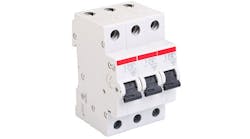The National Electrical Code (NEC) has very specific rules for the location of overcurrent protection devices (OCPDs). First, they must be readily accessible [240.24(A)]. There’s a height requirement that comes with that. The center of the grip of the operating handle (when in its highest position) can’t be more than 6 ft – 7 in. above the floor or work platform. There are four exceptions to this rule [240.24(A)(10) through (4). Do you know what they are?
If the application is an occupancy, each occupant must have ready access to all OCPDs protecting the conductors supplying that occupant’s occupancy [240.24(B)]. But two exceptions apply if electric service, continual supervision, and maintenance are provided by the building management:
- Service and feeder OCPDs don’t have to be accessible [240.21(B)(1)].
- Branch circuit OCPDs don’t have to be accessible if those circuits supply guest rooms or guest suites [240.21(B)(2)].
Locate the OCPDs where they won’t be exposed to physical damage [240.22(C)]. If such a location isn’t available, you may have to create one by, for example, installing bollards.
In addition, you can’t install them near easily ignitible material [240.22(D)] or in a bathroom [240.22(D)].



